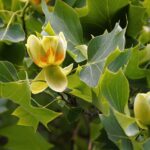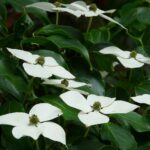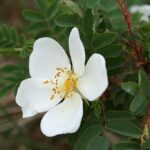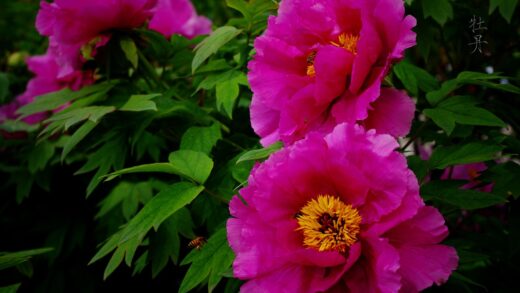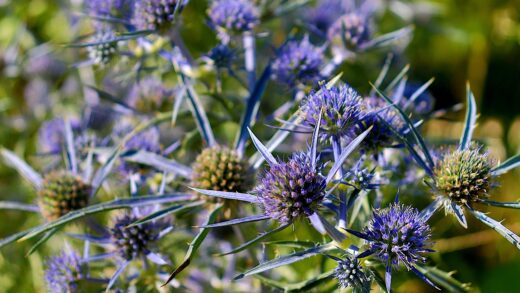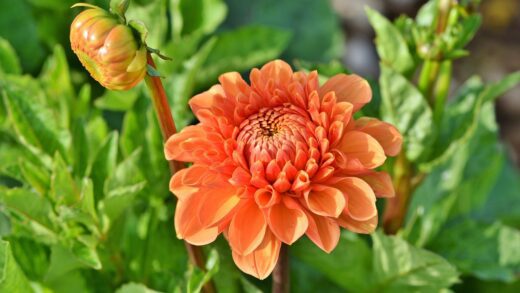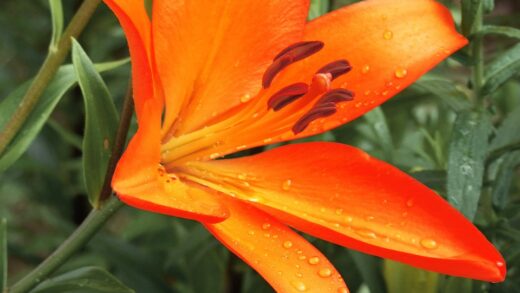Without a doubt, one of the most charming and spectacular plants of spring gardens is the flowering almond, or Prunus triloba. Its double, pink flowers densely cover the branches, often even before the leaves appear, creating a true cloud of blossoms in the garden. This ornamental shrub or small tree, originating from China, is relatively easy to grow and, with proper care, will delight us with its magnificent bloom year after year. The key to its success lies in expert planting and knowledge of effective propagation techniques, which not only enrich our own garden but also allow us to gift a new plant to friends. In the following, we will detail the steps and tricks that will ensure the healthy development and abundant flowering of your flowering almond.
Although the flowering almond originates from the northern regions of China, it has adapted excellently to our climatic conditions, making it a widespread ornamental plant in gardens. It primarily draws attention with its early spring bloom around April, when it virtually illuminates its surroundings in the still-bare garden. Two main varieties are known: the base species that grows into a shrub, and the variety grafted onto a high trunk, grown as a small tree, which looks particularly elegant as a solitary feature on a lawn or as a central element of a flower bed. The double flowers can shine in various shades of pink, from pale pastels to more vibrant tones. It is important to know that the flowers develop on two-year-old or older shoots, which is essential information for later pruning work.
During the plant’s care, one of the most important aspects is the prevention and treatment of Monilinia infection following flowering, to which the flowering almond is particularly susceptible. This fungal disease infects through the flowers and can lead to branch dieback, which in severe cases can even cause the death of the entire plant. For prevention, regular post-bloom pruning is essential, during which we remove the flowered-out, diseased, or damaged branches. Prophylactic spraying is also recommended, which should be done at the beginning of flowering with appropriate fungicides. Diligent plant protection ensures that the flowering almond remains healthy year after year and can bloom in its full glory.
The popularity of the flowering almond is due not only to its beauty but also to its relative undemanding nature. Although its susceptibility to diseases requires attention, it has no special requirements regarding soil and location. It feels comfortable in most garden soils, provided they are well-draining and not prone to waterlogging. It prefers a sunny or semi-shady location; abundant sunlight is essential for rich flowering. By providing the right conditions and regular, expert care, we can grow a long-lived and rewarding ornamental plant that will be the jewel of our garden every spring.
Selecting the right location and preparing the soil
Choosing the ideal location for the flowering almond is the first and one of the most crucial steps towards successful cultivation. The plant prefers a sunny, warm location, as abundant sunlight stimulates the formation of flower buds, which is the basis for the spectacular bloom the following year. Choose a spot in your garden that receives at least six hours of direct sunlight daily. Although it can tolerate partial shade, its flowering will be sparser in shadier conditions, and the plant may become more susceptible to fungal diseases. Wind protection is also an important consideration; a sheltered spot next to a south-facing wall or fence can be an ideal location, protecting it from spring frosts and strong winds.
More articles on this topic
Soil quality is also a determining factor. The flowering almond prefers well-drained, nutrient-rich soils with a slightly alkaline or neutral pH. Overly heavy, clay soils where water easily stagnates can lead to root rot and the plant’s demise. If your garden soil is like this, be sure to improve its structure by adding sand, perlite, and mature compost before planting. Conversely, overly loose, sandy soils should be enriched with organic matter, such as compost or manure, to better retain moisture and nutrients. An optimal soil structure ensures proper aeration for the roots and access to the necessary water and nutrients.
Preparing the planting hole is crucial. Dig a hole at least twice as wide and deep as the size of the plant’s container or root ball. This spacious hole allows the roots to spread easily in their new location, rather than meeting a compacted soil wall. Mix the excavated soil generously with mature compost or high-quality potting soil to provide a nutrient-rich medium for initial growth. You can also add a small amount of slow-release, complex fertilizer, but be careful that it does not come into direct contact with the roots, as it can burn them. Careful soil preparation will pay off, as it provides a strong foundation for the plant for years to come.
The timing of planting is also an important aspect. Container-grown flowering almonds can be planted almost anytime during the frost-free period, but the most ideal times are autumn (from late September until the frosts) or early spring (March-April). The advantage of autumn planting is that the plant has time to establish its roots during the winter and can focus all its energy on growth in the spring. Spring planting is also a good choice, especially in colder, more frost-prone areas. Avoid planting in the summer heat, as the high temperatures and intense sunlight can put too much stress on the freshly planted plant, significantly reducing the chances of successful establishment.
The proper steps of planting
Once you have selected the ideal location and prepared the soil, the planting process can begin. First, carefully remove the plant from its container, making sure not to damage the root ball. Examine the roots; if they are circling the pot wall (root-bound), gently loosen them with your fingers or a small hand rake. This encourages the roots to spread into the new soil instead of continuing to coil in their old shape. Remove any damaged or dead root parts with sharp, clean pruning shears to prevent infections and stimulate new root growth.
More articles on this topic
Place the plant in the center of the prepared planting hole. Setting the correct planting depth is a critical point. The top of the root ball should be level with or very slightly higher than the surrounding soil level. Never plant the plant deeper than it was in its container, as the part of the trunk that goes underground can start to rot, leading to the plant’s demise. Once you have positioned the plant correctly, begin to backfill the hole with the improved soil mix, distributing it evenly around the roots. While filling, gently shake the plant from time to time to allow the soil to fill any air pockets among the roots.
When the hole is half-filled with soil, water the plant thoroughly. This “puddling in” helps the soil to settle around the roots and forces out any remaining air bubbles, ensuring perfect contact between the roots and the soil. Wait for the water to completely soak in, then fill the hole completely with the remaining soil. Gently but firmly compact the soil around the plant with your hands or feet to ensure the plant stands stably. At the end of planting, create a small basin or rim around the plant’s trunk, which will help concentrate water on the root zone during watering.
The final but extremely important step after planting is a thorough watering. After planting, give the plant plenty of water, at least a ten-liter bucketful, even if the soil seems moist. This first large amount of water is vital for the roots to make contact with the new soil and begin absorbing moisture. In the following weeks and months, ensure regular watering, especially during dry, rainless periods. Mulching, for example with pine bark or compost, can help retain soil moisture, reduce weed growth, and protect the root system from the cold in winter.
Methods of propagating the flowering almond
There are several methods for propagating the flowering almond, the most common of which are hardwood cuttings and budding, but we can also try with softwood cuttings. Propagation is not only a cost-effective way to create new plants but also an exciting horticultural challenge. With successful propagation, we can preserve the genetic stock of a particularly beautiful or beloved plant and share it with others. The choice of the right method depends on the available mother plant, our experience, and the desired result. The high-trunk varieties are produced exclusively by grafting, most often by budding, while the shrub forms can also be propagated by cuttings.
Softwood cutting is most successful in late spring and early summer, from late May to early July. At this time, this year’s shoots are sufficiently strong but not yet fully woody. Choose a strong, healthy, disease-free shoot and cut a 10-15 centimeter piece from it, just below a leaf node. Remove the lower leaves, leaving only the top 2-4 leaves, which you can cut in half to reduce transpiration. Dip the bottom end of the cutting into rooting hormone and then stick it into a well-draining, loose medium, such as a mixture of perlite and peat. Successful rooting requires high humidity, which you can provide by covering it with a plastic bag or a piece of glass. Keep the medium constantly moist but not wet, and place the cuttings in a bright but out of direct sunlight location.
Hardwood cutting is another effective vegetative propagation method, which is carried out during the plant’s dormant period in late autumn or winter. After the plant has shed its leaves, cut 20-25 centimeter long pieces from the one-year-old, well-matured, pencil-thick shoots. Make the cut at the bottom end of the cutting diagonally, just below a bud, and at the top end straight, just above a bud. Store the prepared cuttings in bundles in moist sand or perlite in a frost-free, cool place (cellar, pit) until spring. In spring, after the frosts have passed, you can stick the cuttings into a well-prepared bed in open ground so that only their top one or two buds are visible above the soil. With regular watering, the cuttings will root and sprout during the summer.
The standard (tree-form) flowering almond is produced by grafting, most often by T-budding, which requires more expertise. This operation is usually performed in late July or August. Mirobalan plum (Prunus cerasifera) or a type of duke cherry (Prunus x eminens) seedling is most often used as a rootstock, which is grown to the desired height. A mature but still active bud (scion) is cut from the noble variety, i.e., the flowering almond, along with a small piece of bark. A T-shaped incision is made on the rootstock, the bark is gently opened, and the scion bud is slipped under the bark. The bud is secured with special grafting tape or raffia, making sure the bud itself remains free. If the budding is successful, the bud will sprout the following spring, creating the new crown on the trunk.
Post-planting and propagation care
Proper aftercare for newly planted or propagated flowering almonds is essential for their establishment and healthy development. In the first year after planting, the most important task is regular and consistent watering. The root system of a young plant is not yet extensive enough to absorb water from deeper soil layers, so you should water it thoroughly at least once a week, especially during dry, arid summer months. Avoid frequent, light watering, which only moistens the soil surface; instead, water less frequently but with larger amounts of water to ensure it reaches the root zone. Mulching can do a lot to preserve soil moisture and suppress weeds.
Pruning is a cornerstone of flowering almond care, which must also be considered for young plants. For standard varieties, regularly remove any suckers emerging from the rootstock, as they divert energy from the noble crown. Perform the formative pruning of the crown immediately after flowering. For shrub-form plants, the time for pruning also comes after flowering; you can then thin out the overly dense branch system and remove the flowered-out shoots, thereby stimulating the plant to grow new shoots on which next year’s flowers will develop. This pruning is also the most important plant protection measure against Monilinia, as you remove the diseased branch parts along with the dried, infected flowers.
Nutrient supplementation also contributes to the vigorous growth of the young flowering almond. In the spring, at the beginning of the growing season, it is worthwhile to apply mature compost or organic manure around the base of the plant and work it shallowly into the soil. This organic matter not only provides the plant with nutrients but also improves the soil’s structure and water retention. During the growing season, you can also use a complex, slow-release fertilizer, but always follow the dosage instructions on the package. Avoid excessive nitrogen application, as it encourages lush foliage growth at the expense of flowering, and the soft-tissued shoots become more susceptible to diseases.
Finally, do not forget about plant protection, especially concerning Monilinia, which is the flowering almond’s main enemy. Prevention is the most effective defense. In addition to post-bloom pruning, preventive spraying is also crucial. The first spray should be applied when the flower buds are bursting, and the second during full bloom with systemic fungicides approved for this purpose. In rainy, humid weather, a third spray may be necessary after petal fall. Also, watch the plant for aphids, which can attack the fresh shoots. If necessary, control them with appropriate insecticides to allow your young plant to develop undisturbed.








